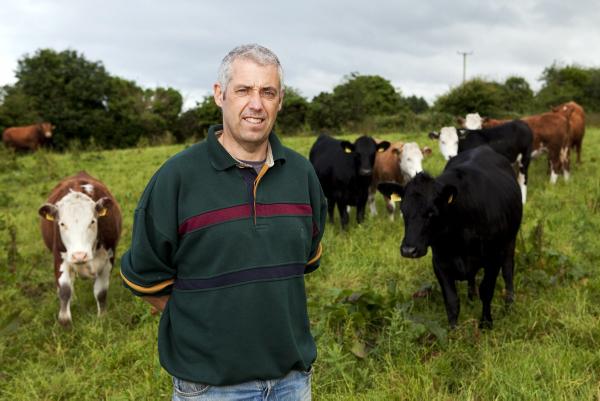My cows were housed on 11 December and are due to start calving in two weeks' time. I have moved the start of calving back a few weeks closer to the start of the grazing season. I am lucky enough that my ground will carry stock in February if the weather is favourable. Calving a little later will ease management, save feed and reduce the level of disease building up in sheds.
This spring, I am due to calve down 38 cows and 13 heifers. The cows are in-calf to my two new Limousin bulls, as are most of the heifers. The bulls are bred by Sympa. A few heifers are in-calf to an Angus bull through AI.
The cows are in great condition and therefore I am restricting the silage and mixing it with straw also. The silage is 69 DMD and I am using 20 bales per week at the minute on the farm. I started feeding pre-calving minerals on 28 December. The weanlings are eating ad-lib silage and 1.5kg/day of a 16% ration made up of barley, citrus and distillers. The ration cost €270/tonne delivered.
My replacements are purchased as calves from a neighbouring dairy herd and the yearling heifers are eating 2kg/day of the ration. They will be served in May. I weighed all weanlings on 4 December and they averaged 388kg liveweight. There were plenty of calves in excess of 400kg with the heaviest calves up at 440kg. Cattle really performed well on good grass and due to the good weather last year.
My weanlings are on average 40kg heavier at the start of December when compared to the calves the previous year. The plan is to try and get them back to grass again in early to mid-February. I took faecal samples from cattle late in the autumn and dosed with Zanil. I will retest them again shortly. I am looking forward to getting my soil analysis back to see how soil fertility is improving on the farm.
My cows were housed on 11 December and are due to start calving in two weeks' time. I have moved the start of calving back a few weeks closer to the start of the grazing season. I am lucky enough that my ground will carry stock in February if the weather is favourable. Calving a little later will ease management, save feed and reduce the level of disease building up in sheds.
This spring, I am due to calve down 38 cows and 13 heifers. The cows are in-calf to my two new Limousin bulls, as are most of the heifers. The bulls are bred by Sympa. A few heifers are in-calf to an Angus bull through AI.
The cows are in great condition and therefore I am restricting the silage and mixing it with straw also. The silage is 69 DMD and I am using 20 bales per week at the minute on the farm. I started feeding pre-calving minerals on 28 December. The weanlings are eating ad-lib silage and 1.5kg/day of a 16% ration made up of barley, citrus and distillers. The ration cost €270/tonne delivered.
My replacements are purchased as calves from a neighbouring dairy herd and the yearling heifers are eating 2kg/day of the ration. They will be served in May. I weighed all weanlings on 4 December and they averaged 388kg liveweight. There were plenty of calves in excess of 400kg with the heaviest calves up at 440kg. Cattle really performed well on good grass and due to the good weather last year.
My weanlings are on average 40kg heavier at the start of December when compared to the calves the previous year. The plan is to try and get them back to grass again in early to mid-February. I took faecal samples from cattle late in the autumn and dosed with Zanil. I will retest them again shortly. I am looking forward to getting my soil analysis back to see how soil fertility is improving on the farm.






 This is a subscriber-only article
This is a subscriber-only article











SHARING OPTIONS: